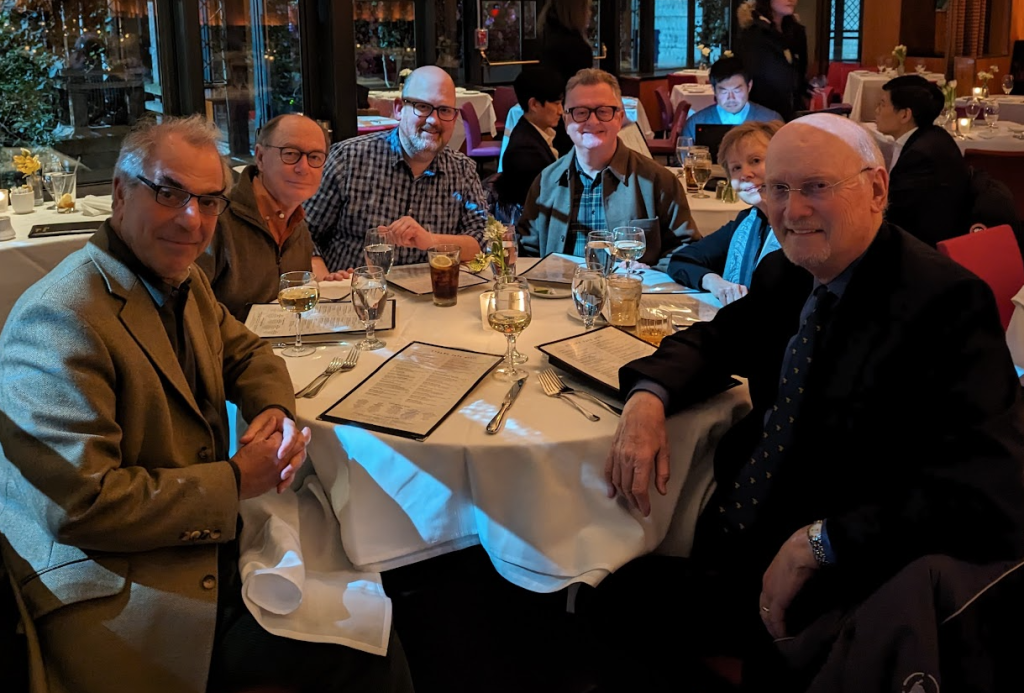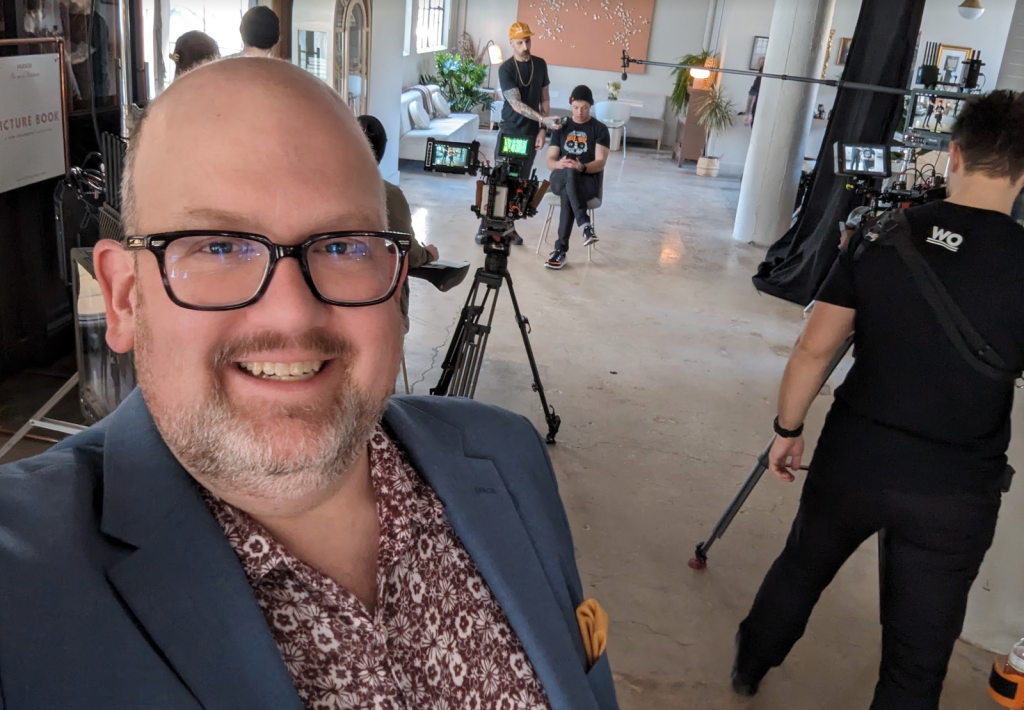Summer 2024 Edition
Working with as many publishers as we have the privilege to do, the employees here at Westchester often have long lists of books we want to read, with each week bringing new titles to add to the growing TBR pile. Below are some of the books we plan to take off the shelf or the bedside table in the coming months as we enjoy the longer days that summer brings.
For more information about the titles or to order a copy, click on the cover images to be redirected to the IndieBound powered by Bookshop.org site. And whatever book(s) you ultimately decide to crack open this summer, happy reading!
 Dark City: The Lost World of Film Noir (Revised and Expanded Edition)
Dark City: The Lost World of Film Noir (Revised and Expanded Edition)
Author: Eddie Muller
Publisher: Running Press (Hachette Book Group)
Why I want to read this book: This edition is a few years old now, but last summer I upped my noir game, running through several noir classics I had missed earlier, as well as some more obscure gems. I always enjoy Eddie Muller’s commentaries on TCM, and so I fully expect to enjoy reading this visually stunning book.
 Submitted by: Scott Keeney, Director, Production and Customer Service
Submitted by: Scott Keeney, Director, Production and Customer Service
 The New York Game: Baseball and the Rise of a New City
The New York Game: Baseball and the Rise of a New City
Author: Kevin Baker
Publisher: Knopf (Penguin Random House)
Why I want to read this book: I always look forward to a new book by Kevin Baker, and in this case, it’s about New York and baseball. I recently ordered it and it’s already sitting on my bookshelf just waiting for me to crack it open! As The New York Times Book Review shared: “A hugely entertaining history of baseball and New York City, bursting with larger-than-life figures and fascinating stories from the game’s beginnings to the end of World War II.” Sounds like a perfect summer read to me!
 Submitted by: Deb Taylor, Chief Operating Officer
Submitted by: Deb Taylor, Chief Operating Officer
 A Natural History of Dragons: A Memoir by Lady Trent
A Natural History of Dragons: A Memoir by Lady Trent
Author: Marie Brennan
Publisher: Tor
Why I want to read this book: During the initial quarantine of Covid-19 in March 2020, I listened to an amazing virtual creative writing class hosted by Marie Brennan about world building through Clarion West. A Natural History of Dragons: A Memoir by Lady Trent is the first in a series that utilizes a lot of the world building techniques she discussed. If you’re a fan of dragons and an alternative Victorian time-period, this is the book series for you!
 Submitted by: Christina Jones, Resource Manager, Westchester Education
Submitted by: Christina Jones, Resource Manager, Westchester Education
 Q. Fulvius I Called You Brother
Q. Fulvius I Called You Brother
Author: M.G. Haynes
Publisher: Independent
Why I want to read this book: This is the third book of the Fulvius Chronicles series. I have read the previous books and found them to be a very intriguing storyline woven through ancient Roman times. They follow the path of Fulvius, a street urchin who saved from execution, makes his way into the military, and moves into piracy in the second book of the series. This third installment in the series picks up the storyline for a friend who he has betrayed who seeks vengeance for his betrayal. In addition to being a great series the author is my cousin M. G. Haynes, who is a West Point graduate, historian, and is still serving in the military.
 Submitted by: Kevin Schroeder, Director, Client Solutions, Westchester Education
Submitted by: Kevin Schroeder, Director, Client Solutions, Westchester Education
 Yellowface
Yellowface
Author: Rebecca F. Kuang
Publisher: Borough Press
Why I want to read this book: I saw that this won fiction book of the year 2024 at The British Book Awards and was intrigued. I’m even more so now that I know it is about a stolen manuscript and the publishing industry as well!
 Submitted by: Julie Willis, Editorial Director & Systems Lead, Westchester Publishing Services UK
Submitted by: Julie Willis, Editorial Director & Systems Lead, Westchester Publishing Services UK
 The Ministry of Time
The Ministry of Time
Author: Kaliane Bradley
Publisher: Simon & Schuster
Why I want to read this book: Why? While attending the US Book Show this May, Simon & Schuster CEO, Jonathan Karp, shared this as his current read, promoting it as a blend of a spy story, a time travel story, and a rom-com. Sounds like it ticks all the boxes for a great summer read and I’m going to check it out.
 Submitted by: Tyler M. Carey, Chief Revenue Officer
Submitted by: Tyler M. Carey, Chief Revenue Officer
 Long Island
Long Island
Author: Colm Tóibín
Publisher: Simon & Schuster
Why I want to read this book: I read Brooklyn which can now be considered the prequel, when it was released 15 years ago and was thrilled when news came out last year that the author had written an unexpected follow-up. Long Island brings back many of the original cast of characters and is set sometime in the 1970s, about 20 years after the events of Brooklyn. Similarly, the story takes place between New York and Enniscorthy, Ireland, where protagonist Eilis Fiorello (nee Lacey) was born and raised before emigrating to America. I’m looking forward to finding out what Eilis and her connections have been up to after all these years. Judging by all the pre-publication buzz around this novel, I’m apparently not the only one! Bonus: You can watch Saoirse Ronan bring Eilis to the screen in the 2015 adaptation of Brooklyn, available to stream on several services.
 Submitted by: Nicole Tomassi, Marketing & Conference Manager
Submitted by: Nicole Tomassi, Marketing & Conference Manager
Looking for a few more titles to consider? These lists may offer up some worthy reading selections:
Summer Reads 2024 – Publishers Weekly
25 Books to Read this Summer – The Atlantic (subscription may be required)
What to Read Summer 2024 – National Public Radio
Best New Books to Read this Summer – Time Magazine



 Submitted by: Kevin J. Gray, President and Chief Content Officer, Westchester Education Services
Submitted by: Kevin J. Gray, President and Chief Content Officer, Westchester Education Services
 Submitted by: Kevin Schroeder, Director, Client Solutions, Westchester Education Services
Submitted by: Kevin Schroeder, Director, Client Solutions, Westchester Education Services


 Submitted by: Darryl Keck, Pagination Specialist
Submitted by: Darryl Keck, Pagination Specialist
 Submitted by: Hugh Shiebler, Director, Client Solutions
Submitted by: Hugh Shiebler, Director, Client Solutions
 Submitted by: Stephanie Nelson, Proofreader
Submitted by: Stephanie Nelson, Proofreader
 Submitted by: Nicole Tomassi, Marketing and Conference Manager
Submitted by: Nicole Tomassi, Marketing and Conference Manager Westchester Publishing Services has decades of history helping different types of publishers and content providers, including trade publishers, children’s publishers, K-12 EdTech platforms, think tanks, legal publishers, industry trade publishers, and many other types of organizations that create and distribute content.
Westchester Publishing Services has decades of history helping different types of publishers and content providers, including trade publishers, children’s publishers, K-12 EdTech platforms, think tanks, legal publishers, industry trade publishers, and many other types of organizations that create and distribute content.